
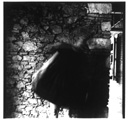
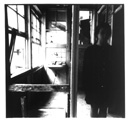
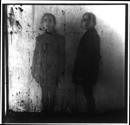
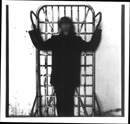
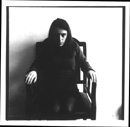
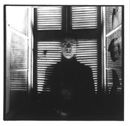
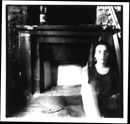
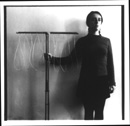

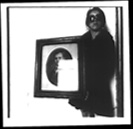
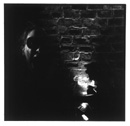
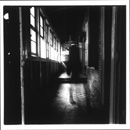
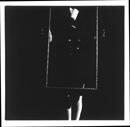
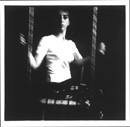
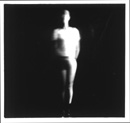
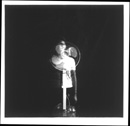
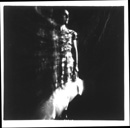
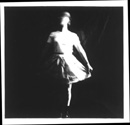
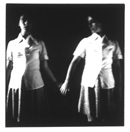
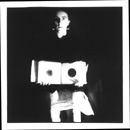
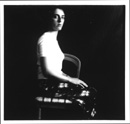






















The dark metamorphoses of Athina Chroni connote the uncertainty of the photographed person’s identity. Dark surroundings create the impression of an enclosed space that is penetrated by the viewer’s stare. The viewer watches the photographer’s lonely games as she alternates from a woman to a child. Athina Chroni also uses disguises in some photographs in her more recent work, Stereopsis. (2000). To see the stereoscopic photographs, the audience needs a dioptic equipment placed in front of the double images. The viewer is thus forced to approach and observe the photographed persons in a more “alive” and private setting.
The 12th Photosynkyria 2000 / text by Kostis Antoniadis, Exhibitions Catalogue, Published by University Studio Press, Thessaloniki 2000
The model ( = the person being taken picture of ) will lose
or keep some of the characteristic elements of its personality regardless the fact that an
effort has been made to render it in a realistic manner or not : being the object (?) in
the hands of the creator-photographer it is possible to be treated by him as an easily
shaped material or not, which depends directly on the creator's ability or wish.
Yet, what happens when the photographer decides that he himself is the
object? Who has the leading part in this case? How able is he to keep distances, become
the observer of himself, decipher the folds of his personality and render them in
pictures?
Finally is it possible through ( the creation of ) self - portraits to
achieve conscience of yourself - even partially - and become familiar with its
intricacies? Also how vulnerable can you become by bringing to the surface pieces of your
personality?
Athina Chroni